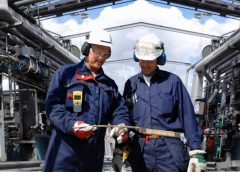Oil and gas workers are at the highest risk of injuries compared to workers in other industries in the United States. The best way to reduce accidents is to prioritize work site safety. Read these oil field safety tips every employee should know for helpful information!
Ensure Familiarity With Jobsites
Every employee plays a significant role on jobsites. But before work begins, it’s essential to become familiar with the oil field. Understand the flow of the field, acknowledge hazards, and be mindful of precautions. Familiarity prevents avoidable accidents like accessing the wrong area and doing an incorrect task.
Understand Hydrocarbon Mapping
Understanding hydrocarbon mapping is another oil field safety tip every employee should know. Color coding distinguishes oil and gas in different parts of the field on maps. For instance, brown indicates oil, and yellow indicates gas. Furthermore, blue signifies noncommercial hydrocarbons, and green shows low levels of hydrocarbons.
The maps change based on compounds in oil reservoirs. When encountering certain oil and gases, some compounds are more reactive than others. To ensure workers stay safe, they need to understand the elements they encounter.
Frequently Check Light Sources
Adequate lighting is a basic requirement in oil fields. Illumination helps workers see equipment, survey oil, and navigate the work site.
That said, frequently checking light sources ensures light towers work, especially at night. Visibility at night is important in oil fields because proper lighting prevents injuries and fatalities. No worker wants to fall into a hole or use the wrong machine setting.
The right lighting keeps the work site safe and reduces accidents!
Maintain Consistent Communication
Clear visual and oral communication is vital in oil fields. An employee could encounter volatile compounds that can injure them and other employees. Communication conveys threats and dangers on work sites so crew members know what to look out for and how to perform tasks.
Assess In-Vehicle Monitoring Systems
Motor vehicle accidents are a common source of fatalities in the oil and gas industry. Companies use in-vehicle monitoring systems to monitor drivers to analyze poor habits or internal issues. Workers should be aware of monitoring systems and follow safe practices. If employees notice internal problems (e.g., transmission leaks, stalling, issues shifting gears), they must alert supervisors about issues.





